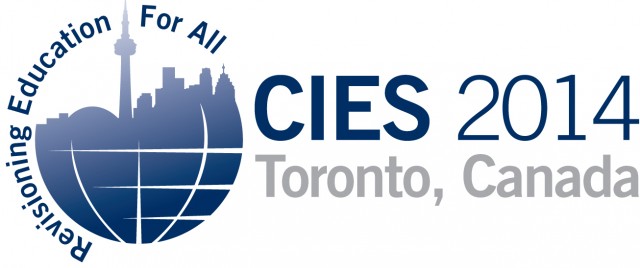[vc_row][vc_column width=”1/1″][vc_column_text]
Culture of reading in Yemen is key to literacy
By Maggie Farrand
[/vc_column_text][/vc_column][/vc_row][vc_row][vc_column width=”2/3″][vc_column_text]

Toronto, Canada—When Fathi El-Ashry disclosed that the curriculum for first to third graders in Yemen hadn’t been revised since 1995, the audience at the 2014 Comparative and International Education Society (CIES) conference was alarmed. As education experts, they knew the typical revision cycle for curricula was six to eight years.
That fact does, however, help to explain the country’s troubling statistics: an adult literacy rate of only 54 percent and a report stating that 27 percent of third graders could not read a single word.
“There has been a loss of the reading culture,” said El-Ashry, a Senior Associate in Creative’s Instructional Systems and School Governance practice area.
In 2012, Creative partnered with the U.S. Agency for International Development and Yemen’s Ministry of Education to create and deliver the overdue curriculum updates. Called the Yemen Early Grade Reading Approach, it introduced a phonics-based reading program to 400 schools.
El-Ashry joined Joy du Plessis, former director of Creative’s education program in Yemen on a panel titled “Early grade reading literacy: practices, assessments, successes and challenges” at last week’s CIES conference in Toronto, Canada.
The Yemen Early Grade Reading Approach is currently in 1,200 schools across eight of Yemen’s 21 governorates, El-Ashry explained, employing its phonics-based scope and sequence, scripted lesson plans for teachers, student readers, teacher training and coaching mother and father councils.
“Right now, we’re working with 8,000 teachers, more than 50,000 parents and 250,000 students,” said du Plessis.
The Yemen Early Grade Reading Approach also includes a public awareness campaign, complete with TV spots and billboards, with the goal of creating excitement about reading, as well as encouraging parents to take an active role in their child’s education.
According to El-Ashry, it’s essential. “This media campaign,” he said, “is so needed in Yemen if we want to see any change in reading scores or people’s perceptions.”
This year brings an added challenge to the reading program: taking it nationwide. The Ministry of Education has asked Creative to expand the program – and the reading culture it has created.
“We’ve seen such great progress in our two trial years,” El-Ashry told the audience. “Teachers like it, research shows huge gains in reading and parental support. Now we’re ready to take this to the whole country, into 11,000 schools.”
The nationwide scale-up will bring its own challenges, says du Plessis, but she also thinks it will contribute to continued and strengthened stability in Yemen.
“We believe reading reform is a unifier,” she said. “An effective and visible program in which the Ministry has ownership will provide legitimacy to the transitional government and reduce fragility.”
With Ministry officials at the front of the program – in TV announcements, on billboards and speaking to the public about changes in schools to better literacy – citizens see the government providing services, translating to a better public perception of the government.
The Yemen Early Grade Reading Approach’s curriculum development took a systemic approach, where it was trialed, revised, reviewed and approved through the Ministry processes. Working within their system allows for a more home-grown result, one the Ministry is likely to continue to use and advocate for.
“Reading is a national problem,” explained du Plessis. “And when we see parents becoming more engaged with their child’s attendance and performance, kids beginning to read, dropout rates reducing, the whole culture changing…we believe this program can contribute to stability in Yemen.”
[/vc_column_text][/vc_column][vc_column width=”1/12″][/vc_column][vc_column width=”1/4″][vc_widget_sidebar sidebar_id=”sidebar-primary”][/vc_column][/vc_row]